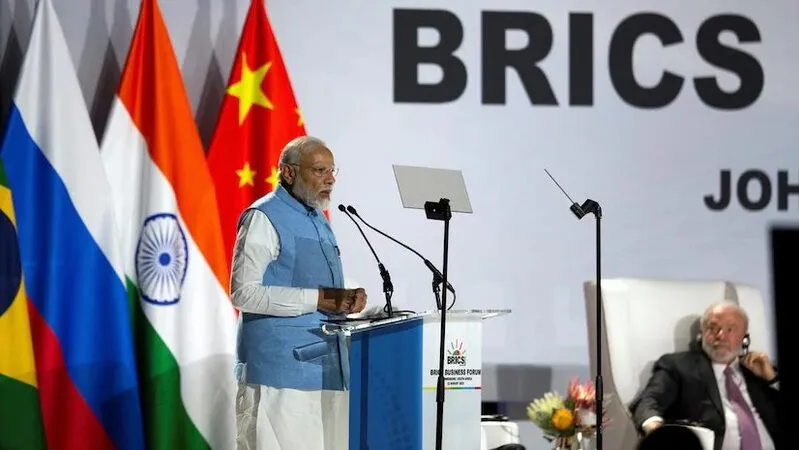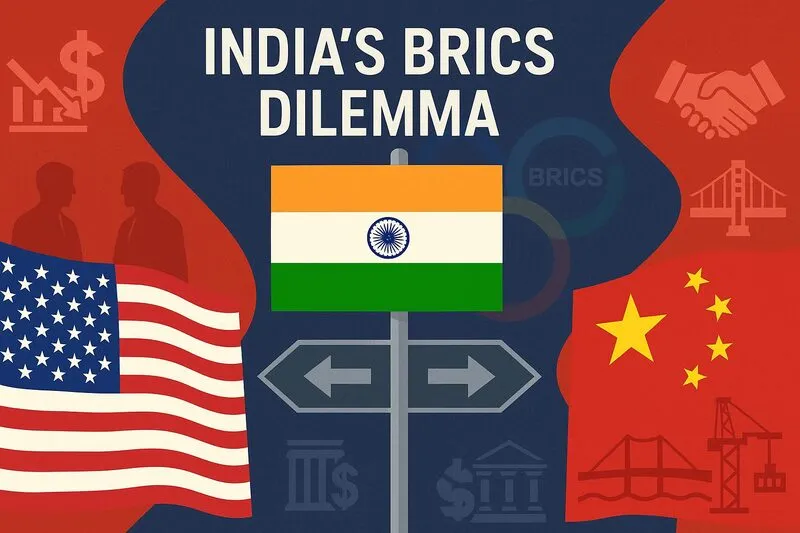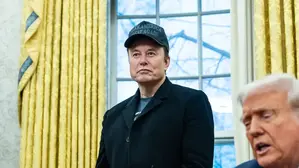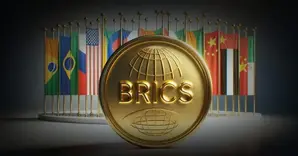India-BRICS relations are actually facing an unprecedented test right now as tensions with the United States reach their highest point in decades. At the time of writing, speculation around why did India join BRICS has intensified after President Trump imposed harsh 25% tariffs on Indian goods, and even causes of conflict between India and China seem to be taking a backseat to more pressing concerns about Washington’s ultimatum.
Right now, India-China-US relations are being reshaped by Trump’s aggressive stance, and analysts are actually discussing whether India BRICS kicked out scenarios could become reality amid this diplomatic crisis.
Also Read: India Lets 30 Countries Trade With Rupee in New BRICS Strategy
India BRICS Relations Face US Pressure Amid China Conflicts and Myths

Trump’s Tariff Ultimatum Reshapes Strategic Calculations
The diplomatic storm was actually triggered when Trump announced the tariffs starting August 1st, targeting what he called India’s trade barriers. His frustration was made clear through social media posts, and the situation escalated quickly.
Trump said:
“India, Russia can take their dead economies down together, for all I care.”
The President also mocked India’s position by announcing an oil collaboration with Pakistan, saying:
“Maybe they’ll be selling oil to India some day!”
He also criticized India’s purchasing patterns in a lengthy post:
“Remember, while India is our friend, we have, over the years, done relatively little business with them because their Tariffs are far too high, among the highest in the World, and they have the most strenuous and obnoxious non-monetary Trade Barriers of any Country. Also, they have always bought a vast majority of their military equipment from Russia, and are Russia’s largest buyer of ENERGY, along with China, at a time when everyone wants Russia to STOP THE KILLING IN UKRAINE – ALL THINGS NOT GOOD.”
Right now, the $45.7 billion trade deficit with the US adds fuel to the fire. These actions expose Washington’s approach to India-BRICS relations, and it’s becoming clear that the partnership has been more transactional than strategic.
Rubio’s Energy Partnership Criticism
Secretary of State Marco Rubio has been particularly vocal about India’s energy purchases from Russia, describing them as problematic. Speaking to Fox Radio, Rubio explained the situation regarding why did India join BRICS and its current energy needs, saying:
“India has huge energy needs and that includes the ability to buy oil and coal and gas and things that it needs to power its economy like every country does, and it buys it from Russia, because Russian oil is sanctioned and cheap and – meaning they have to – in many cases, they’re selling it under the global price because of the sanctions. And that, unfortunately, is helping to sustain the Russian war effort.”
India’s Ministry responded to these criticisms, with the Ministry of Commerce & Industry stating:
“The Government will take all steps necessary to secure our national interest.”
China Extends Olive Branch Through BRICS Framework
While tensions with the US escalate, China has actually been positioning itself differently regarding India BRICS relations. At the 2025 BRICS Summit in Rio de Janeiro, China supported India’s bid for UN Security Council reform, and observers saw this as a significant gesture.
The economic benefits are already tangible for India. The BRICS-led New Development Bank along with AIIB have financed significant projects. India receives $12 billion from AIIB and $7.5 billion from NDB loans, making it a major beneficiary of these alternative institutions.
Reports suggest that India’s NITI Aayog has actually proposed easing Chinese investment rules, allowing 24 percent stakes without security clearance. This addresses some causes of conflict between India and China through economic cooperation, and it signals a potential shift in policy.
India’s Position Creates Uncertainty
National security analyst Derek J. Grossman noted the severity of current India-China-US relations, observing that the current situation represents the worst in India US relations in decades, with 25 years of progress appearing undone.
The BRICS bloc represents 56 percent of global population along with 44 percent of GDP. Right now, India must balance its BRICS partnerships against Western pressure. The diplomatic standoff continues while observers watch whether India kicked out of BRIS scenarios could actually materialize.
Also Read: India Leaving BRICS Buzz: Rubio Slams Oil Deal, US-India Tensions Rise
This crisis represents a critical juncture that could determine India’s future alignment between strengthening ties through BRICS or pursuing closer US relationships despite recent setbacks. At the time of writing, the situation remains fluid, and India’s choices will have lasting implications for global geopolitics.






